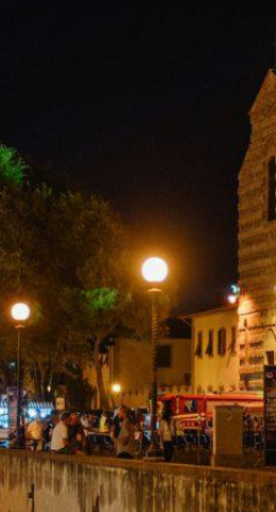Seaside archaeology in the Tuscan islands
Museums, archaeological sites and ancient relics in the Tuscan Archipelago
Tuscany has a wealth of ancient settlements that have yielded precious finds: hence the region's invaluable archaeological inheritance. From prehistory to the Roman era, via the Etruscan period, everywhere you go you stumble on archaeological sites and museums, all chronicling the area's past. The islands in the Tuscan Archipelago are no different, being home to the remains of ancient villas, shipwrecks and curious prehistoric discoveries. Here are a few pointers for those who just can't let go of their Indiana Jones hat, not even in the middle of the sea.
-
1.Isle of Elba
-
2.Isola del Giglio
-
3.Giannutri
-
4.Pianosa
-
5.Capraia and Gorgona
Isle of Elba

The largest island in the Tuscan Archipelago was without doubt a vital waystation for anyone sailing in the Mediterranean. The remains that we find here date back to prehistoric times: on the heights of Monte Capanne there are still some mysterious stones, arranged vertically like menhirs, while the Marciana Archaeological Museum conserves many handmade objects that were also found up here. Elba was an island much beloved of the Romans, who strewed it with once-magnificent holiday villas for their aristocracy. These include the Villa delle Grotte at Portoferraio (inhabited from the first century BC to the first century AD); Villa della Linguella and, at Cavo, Villa di Capo Castello, which commands a panoramic view. The archaeological remains that were dug up here are kept in the Linguella Museum, in Portoferraio.
Isola del Giglio

Isola del Giglio was probably first settled by the Etruscans, even if certain sites (like Cote Ciombella) and finds from places such as Le Secche suggest a human presence even in the Neolithic age. What is not in question is the energy that the island enjoyed in the Roman period: look no further than the Villa del Saraceno, in Giglio Porto. This building, raised by the merchant family Domitii Enobarbi between the first and second centuries AD, was made up of various rooms and outdoor areas, largely dedicated to fish farming. Even the sea around Isola del Giglio has given us clues about the Roman world, especially the wreck of a merchant ship that was carrying 3rd-century amphoras.
Giannutri

Nor were the Roman nobility indifferent to the beauties of neighbouring Giannutri. The remains of the ancient port of Cala Maestra can be seen on this small and untamed island, while the seabed at Punta Scaletta and Cala Spalmatoio hide the wrecks of Roman and Etruscan ships. A truly spectacular archaeological site, right at the heart of the island, is the villa of the Domitii Enobarbi: an aristocratic Roman residence from the second century AD, with a sea view like few others.
Pianosa

Pianosa, a natural paradise which pulls in lovers of trekking and birdwatching, has been inhabited since prehistoric times, as is shown by Palaeolithic tools and animal bones that were found in the Grotta dei Cervi, at Cala Biagio. The Bagni di Agrippa, a large Roman bathing complex dedicated to Agrippa, nephew of Emperor Augustus, are truly unmissable. Sent here for his unbecoming behaviour, Agrippa enjoyed a "golden exile" in a palace (now disappeared) with a fish farm, a theatre and a pool by the sea, all designed for enviable days of bone-idleness. The island's archaeology doesn't end with the Baths, however: it also has catacombs, datable to between the fourth and sixth centuries AD, full of eerie burial chambers and recesses.
Capraia and Gorgona

On the island of Capraia, still wild, wooded and steeped in the smell of Mediterranean shrub, the Phoenicians, Greeks, Etruscans and Romans all made landfall. People even older than they probably set foot on this gem of the Archipelago, if certain oddly-arranged stones in the Acciatore Pass, perhaps intended for some ritual, are anything to go by. If you head in the direction of the castle, you might find the ruins of an imperial villa.
Signs of an active past can also be found on the island of Gorgona, including the ruins of a maritime villa from the late Roman Republic and a few pieces of pottery from the same era.


























































